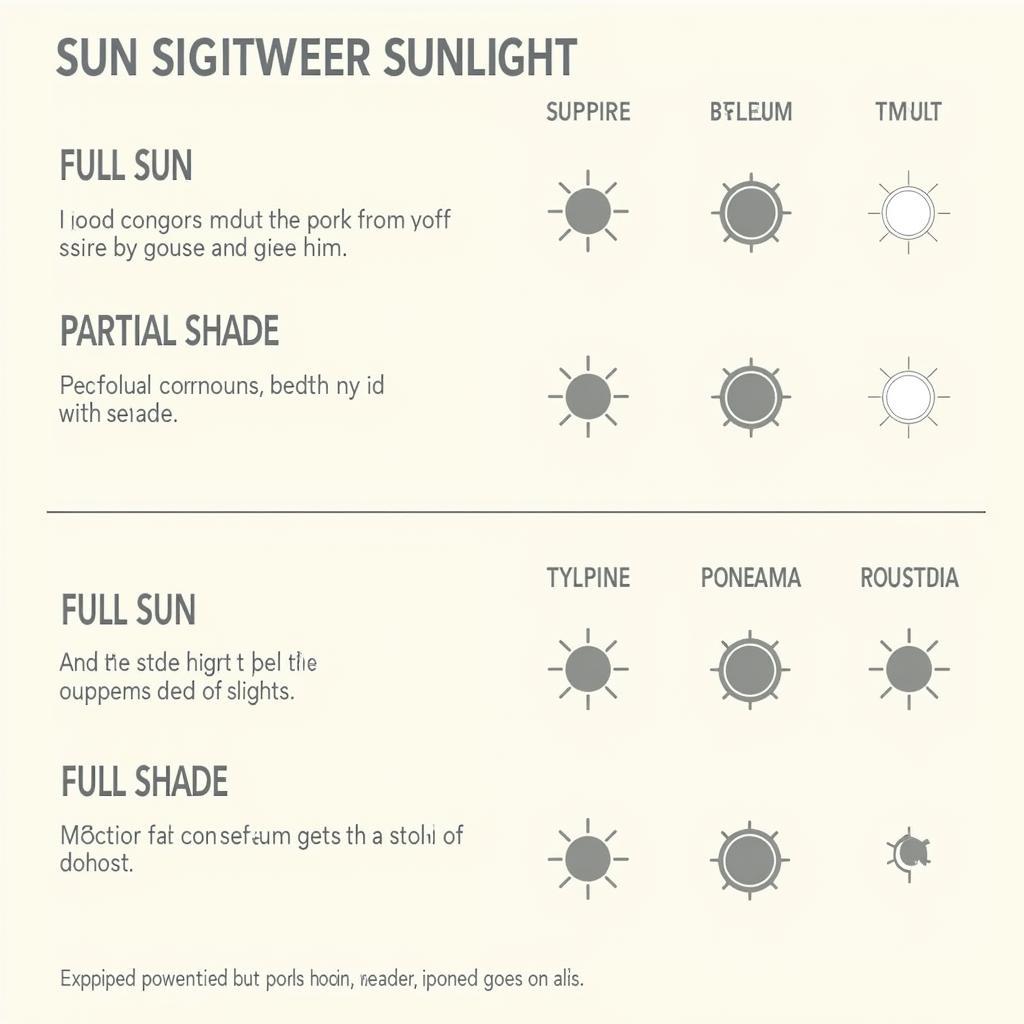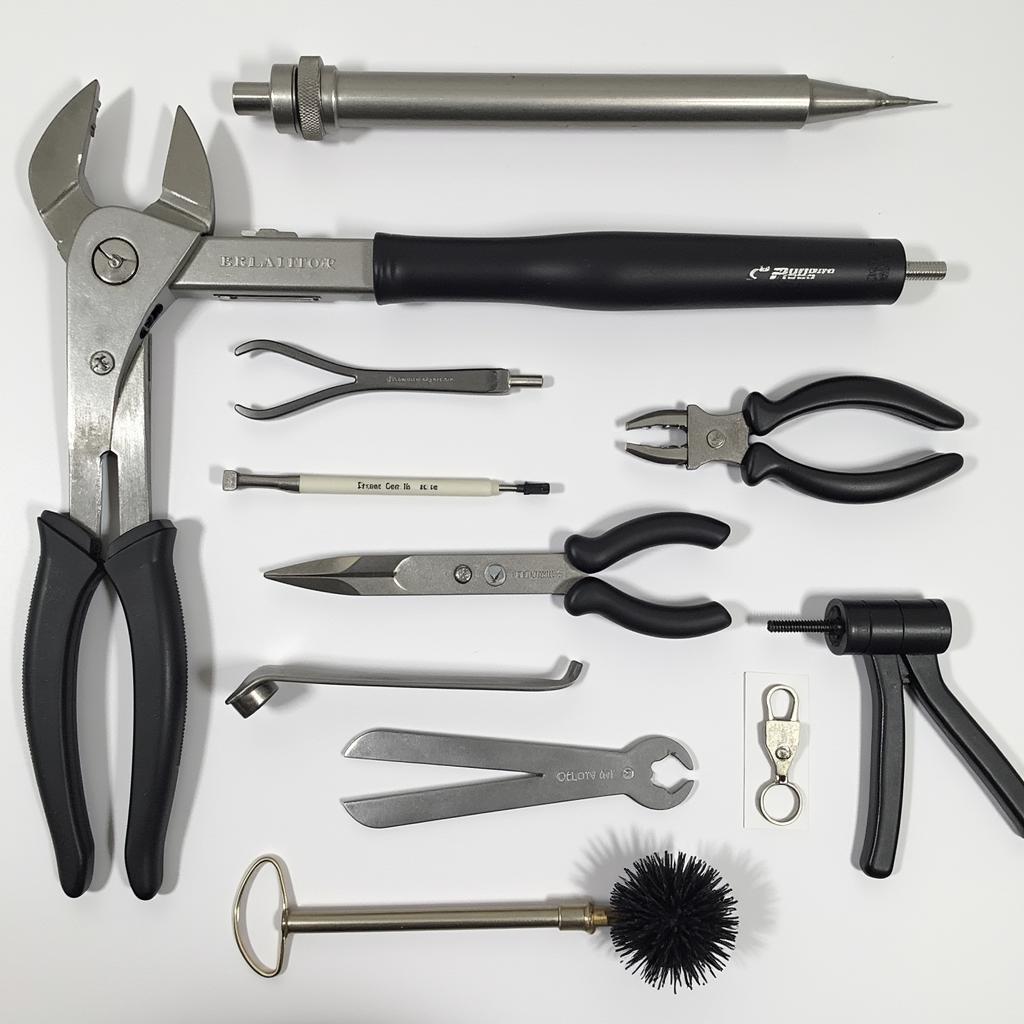Essential Stuff for the Garden: A Guide to Getting Started
October 14, 2024Creating your own little slice of paradise doesn’t happen overnight, but with the right Stuff For The Garden, you can turn even the smallest patch of land into a flourishing oasis. Whether you’re a seasoned green thumb or just starting out, understanding the essential elements of a thriving garden will set you up for success.
Understanding Your Garden’s Needs
Before diving into the specifics of what to put in your garden, it’s crucial to consider the foundation itself.
Soil: The Foundation of a Healthy Garden
Just like a house needs a solid foundation, your garden relies heavily on healthy soil. Soil provides essential nutrients, anchors roots, and retains moisture.
- Testing Your Soil: Before you even think about planting, get your soil tested. This will reveal its pH level and nutrient content, guiding you towards any amendments needed.
- Types of Soil: There are three main types: clay, sand, and loam. Each has its pros and cons when it comes to drainage and nutrient retention. Research which type you have and adjust your gardening practices accordingly.
- Improving Soil Structure: Adding organic matter like compost, manure, or leaf mold improves drainage, aeration, and nutrient content in any soil type.
Sunlight: The Energy Source for Plants
Plants need sunlight for photosynthesis, the process of converting light into energy.
- Assessing Sunlight Exposure: Observe your garden throughout the day to determine how many hours of direct sunlight it receives. Most vegetables and flowering plants thrive in full sun (6-8 hours), while others prefer partial shade.
- Choosing Plants Wisely: Select plants based on your garden’s sunlight conditions. Don’t try to force sun-loving plants to grow in shady areas, and vice versa.
- Creating Shade: If your garden receives intense afternoon sun, consider providing some shade for delicate plants using shade cloth or taller plants.
 A chart depicting different levels of sunlight exposure in a garden, from full sun to full shade.
A chart depicting different levels of sunlight exposure in a garden, from full sun to full shade.
Essential Tools for Gardening Success
Having the right tools can make all the difference in the ease and enjoyment of gardening.
Basic Gardening Tools
- Gardening Gloves: Protect your hands from dirt, thorns, and blisters.
- Hand Trowel: Ideal for digging small holes for planting, transplanting seedlings, and weeding.
- Hand Rake: Perfect for smoothing soil surfaces, removing debris, and spreading mulch.
- Watering Can or Hose: Essential for providing your plants with the moisture they need.
 An assortment of essential gardening tools arranged on a wooden table, including gloves, a hand trowel, a hand rake, and a watering can.
An assortment of essential gardening tools arranged on a wooden table, including gloves, a hand trowel, a hand rake, and a watering can.
Additional Useful Tools
- Garden Fork: Used for loosening and aerating soil, especially in compacted areas.
- Shovel: Helpful for moving larger quantities of soil, compost, or mulch.
- Pruning Shears: Essential for trimming back dead or overgrown branches and shaping plants.
Choosing Quality Tools
Invest in well-made tools that will last for years to come. Look for durable materials and ergonomic designs.
Getting Your Hands Dirty: The Fun Part!
With your garden prepped and tools ready, it’s time for the most exciting part – choosing your plants.
Selecting Plants
- Consider Your Climate: Research which plants are best suited for your region’s climate and growing season.
- Start Small: Don’t overwhelm yourself with a huge garden in your first year. Start with a few easy-to-grow varieties and gradually expand your plant selection.
- Companion Planting: Explore the benefits of companion planting, where certain plants are grown together to deter pests, attract beneficial insects, or enhance growth.
 A raised bed vegetable garden filled with a variety of colorful vegetables like tomatoes, lettuce, and peppers.
A raised bed vegetable garden filled with a variety of colorful vegetables like tomatoes, lettuce, and peppers.
Planting Techniques
- Follow Planting Instructions: Refer to the plant tags or seed packets for specific planting depth, spacing, and watering requirements.
- Provide Support: Tall plants like tomatoes and beans may need stakes or cages for support as they grow.
- Mulch Around Plants: Apply a layer of mulch around your plants to help retain moisture, suppress weeds, and regulate soil temperature.
Maintaining a Thriving Garden
Creating a beautiful garden is an ongoing process that requires regular care and attention.
Watering
- Water Deeply and Less Often: Encourage deep root growth by watering deeply a few times a week rather than shallow watering every day.
- Water at the Base: Avoid wetting the leaves, as this can promote fungal diseases.
Weeding
- Weed Regularly: Stay on top of weeds, as they compete with your plants for water and nutrients.
- Mulch to Suppress Weeds: A layer of mulch helps prevent weed seeds from germinating.
Fertilizing
- Feed Your Plants: Regular fertilization provides your plants with the nutrients they need to grow strong and healthy.
- Choose the Right Fertilizer: Different plants have different nutrient requirements. Select a fertilizer that is appropriate for the types of plants in your garden.
Pest and Disease Control
- Inspect Plants Regularly: Keep an eye out for signs of pests or diseases, such as discolored leaves, holes in leaves, or wilting.
- Use Natural Pest Control Methods: Whenever possible, opt for natural pest control methods like insecticidal soap or neem oil.
Conclusion
Creating a thriving garden is a rewarding experience that brings joy, beauty, and a sense of accomplishment. By understanding the essential elements of gardening, you can turn your outdoor space into a flourishing oasis. Remember to start with good soil, provide adequate sunlight, choose the right plants, and maintain your garden with care. With a little effort, you’ll be well on your way to enjoying the fruits (and vegetables!) of your labor.
FAQs
- What are some easy-to-grow vegetables for beginners? Some beginner-friendly vegetables include lettuce, spinach, radishes, carrots, and zucchini.
- How often should I water my garden? Most gardens benefit from a deep watering 2-3 times per week. However, the frequency may vary depending on your climate and soil type.
- When is the best time to weed my garden? It’s easiest to pull weeds when the soil is moist, such as after a rain shower or watering.
- How do I know if my plants need fertilizer? Signs of nutrient deficiencies include stunted growth, yellowing leaves, and poor flowering or fruiting.
- What are some natural ways to control pests in my garden? Natural pest control methods include handpicking pests, introducing beneficial insects, using insecticidal soap, and applying neem oil.
Need assistance with your garden? Contact us at Phone Number: 0915117113, Email: [email protected] Or visit us at: Hamlet 3, Binh An, Phu Thuong, Vietnam, Binh Phuoc 830000, Vietnam. Our dedicated customer support team is available 24/7 to address your gardening needs.